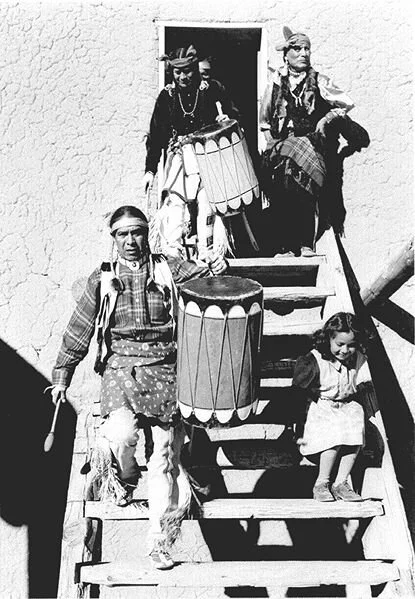Christmas in Kyoto did not sound promising but the flight was cheap. Having spent the last several Christmases huddled around the small wooden tables of the German Weihnachtsmarken, hands wrapped tightly around steaming ceramic mugs of glühwein, we expected Japan to be a bit of a disappointment in terms of holiday spirit.
There would be no Christmas markets selling roasted sausages or over-sized steins of altbier. There would be no outdoor festival tables to provide the inevitable camaraderie that accompanies the mass consumption of mulled wine in freezing temperatures. Communication would be near impossible as both my wife Lauren and I spoke very little Japanese and could not read kanji or katakana.
Nonetheless, one evening as we approached the bottom of our second bottle of wine, we decided Kyoto would make for a fine introduction to Japanese culture, with the added bonus of seeing drunken Japanese “salary men” stumbling around in Santa hats.
Our Christmas Day flight was uneventful and we were able to grunt and point our way onto a train that would take us to Kyoto Station. Credit goes to the Japanese for taking the European model of rail travel and improving upon it exponentially – Kyoto Station puts the main stations of Paris and Berlin to shame. Taxi doors open automatically and the rear seats are covered in durable lace doilies. As we arrived at the hotel I imagine I looked somewhat akin to a travel weary tea sandwich.
Despite it being Christmas Day, we had no discernible plan of attack regarding a grand meal or celebration. The hour was too early to eat but socially acceptable to drink. We decided to set a base of operations at the pub across the street from the hotel. I immediately spotted the pub upon our arrival; a valuable life skill I have developed over the years. The second floor pub, The Black & White, named for the popular brand of scotch, was nearly empty with the exception of a few aged Japanese men smoking cigarettes. As we started to sit at the bar, the two stools nearest the door, the bartender shuffled over.
“Sorry, these are reserved,” he said.
“All of them? ” I asked.
“Yes.”
Off to a bad start in Kyoto. It's not as if Lauren and I kicked open the door waving an American flag while belting out Lee Greenwood's Greatest Hits. We've always considered ourselves rather inconspicuous travelers, opting for muted colors and muted voices. In Germany we were frequently mistaken for local nationals at first glance. It wasn't until I started to speak my broken German that most waitstaff and bartenders were able to pin us down as Auslanders. We left the pub dejected and pondering the fact that despite our best efforts, we'd never be able to blend in with the locals in Japan.
Eventually we came upon a wine bar that was more than happy to accept our Yen in exchange for refreshments. Now that we had a moment to sit and plan our evening, we began to fret over our lack of dinner reservations. We were so accustomed to the laissez-faire nature of dining in Europe that we failed to account for any potential cultural differences in Japan.
Our fears were well founded. After leaving the wine bar, famished and a bit drunk, we faced one dismissal after the other from the restaurants throughout Kyoto. Apparently we failed to account for the adoption of Christmasas one of the many aspects of the Westernization of Japanese culture. I flipped vigorously through the Japanese dining app on my phone fearing we would be reduced to some second rate sushi place for our Christmas dinner.
As the denials continued, we happened upon a small izakaya, a sort of Japanese pub, to regroup and consider our realistic options. As we downed pints of Sapporo and chatted with a bartender who was enthusiastic about practicing his English, I finally felt a sense of comfort. Two Santa hats adorned a tacky Christmas centerpiece at our end of the bar. I removed the hat and put it on and the bartender followed my lead. We posed for pictures side by side, arms over shoulders. I'd never felt taller. Perhaps it was the Sapporo.
As we left, the bartender suggested a restaurant around the corner called Gyu-Kaku that was known for its yakiniku. I had no idea what yakiniku was but it was definitely time to eat. After a short walk, we found the restaurant and were promptly seated. It turns out yakiniku is a type of do-it-yourself barbecue that is extremely popular in Japan – an open flame fondue. The server brought us a tray of thinly sliced meats of various origins -ribs, tongues, livers, tenderloins, bellies and cheeks to name a few. It wasn't ham and mashed potatoes but it was strangely comforting.
The next morning, we searched for a taxi to take us to the Fushimi Inari, a famed Shinto shrine with thousands of bright orange toriis dedicated to Inari, the god of rice. Standing on the corner was a portly Japanese man of about 30 years with bloodshot eyes, wearing a black business suit. To his right was his companion, a young woman resembling something out of a Japanese cartoon. She was wearing what could only be described as a“sexy” Santa costume that barely covered the important parts. They began to argue and she protested angrily by crossing her arms and stomping her feet. A taxi arrived and he shoved her into the backseat. Before departing the man screamed something of an aggressive nature toward the gawking crowd.
Not speaking any Japanese, I just figured the man was saying “Merry Christmas”.
CM Tobias recently relocated from Germany to Okinawa, Japanwhere he works in education. He is currently developing www.travelpedant.com where he hopes to offer a humorous take on being lost abroad.




